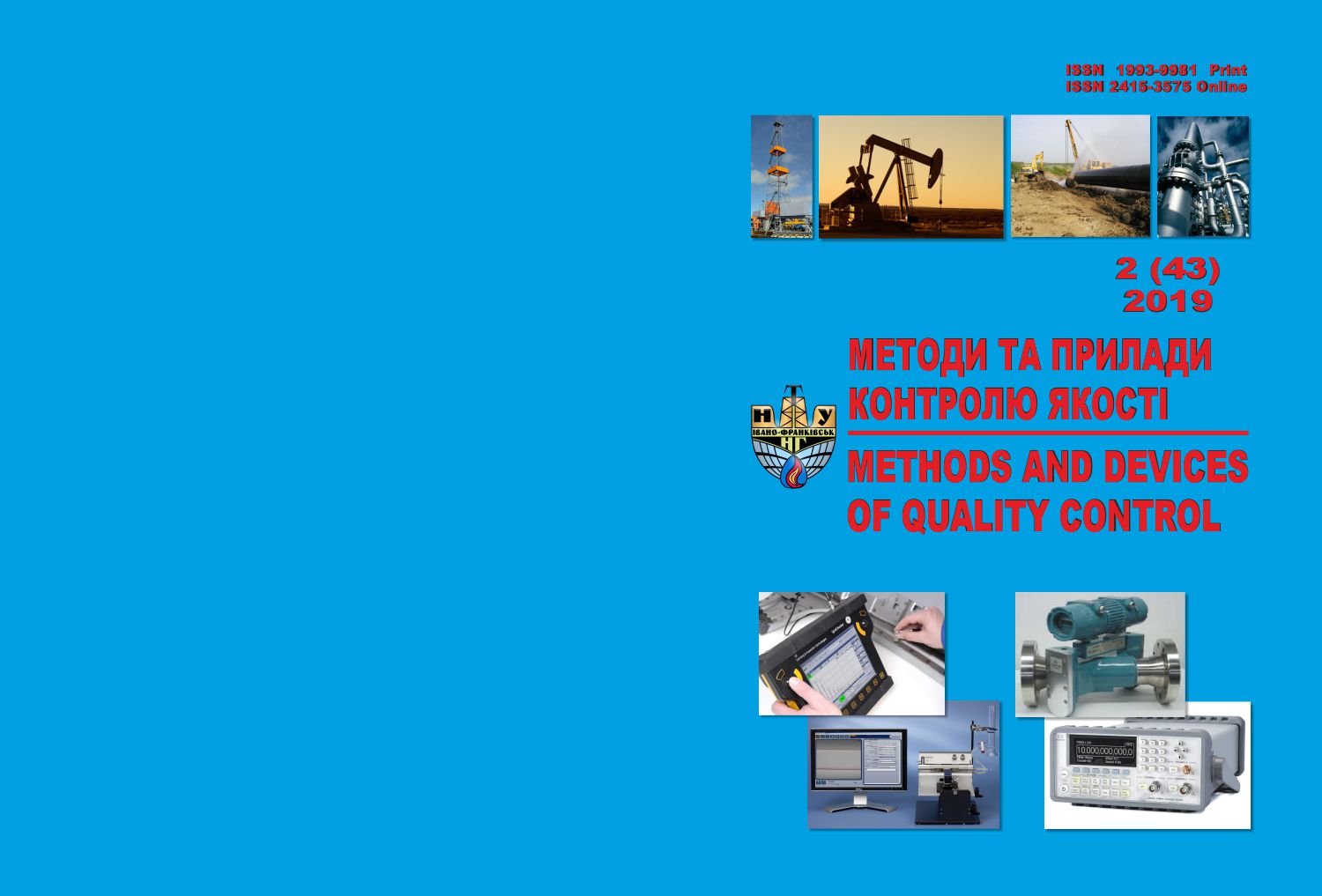МЕТОД ОЦІНКИ ТЕХНІЧНОГО СТАНУ КАМЕРИ ЗГОРЯННЯ ГАЗОТУРБІННОЇ УСТАНОВКИ НА ЗАСАДАХ ШТУЧНОГО ІНТЕЛЕКТУ
DOI:
https://doi.org/10.31471/1993-9981-2019-2(43)-68-77Ключові слова:
Газотурбінна установка, камера згоряння, технічний стан, нейромережа, критерій розділення, роздільна крива, генетичний алгоритмАнотація
Надійна і ефективна робота газоперекачувального агрегату в значній степені залежить від технічного стану камери згоряння. Незадовільний технічний стан камери згоряння знижує не тільки коефіцієнт корисної дії газоперекачувального агрегату, але й збільшує шкідливі викиди в навколишнє середовище шкідливих речовин таких як оксиди азоту і вуглецю. Тому визначення технічного стану камери згоряння за результатами спостережень за роботою газотурбінної установки є актуальною науковою задачею.
У результаті аналізу літературних джерел і експериментальних досліджень встановлено, що опосередкованими показниками, які характеризують технічний стан камери згоряння, є сумарна концентрація оксидів азоту і середньоквадратичне значення віброшвидкості корпусу камери згоряння. З плином часу відбувається деградація елементів камери згоряння, що приводить до зміни ознак технічного стану камери згоряння. Показники технічного стану утворюють площину ознак, яку за допомогою нейромережі Кохонена, розбито на три області, кожна із яких відповідає певному технічному стану камери згоряння - «добре», «прийнятно», «допустимо». Для розмежування областей технічних станів розроблений метод побудови роздільних кривих на засадах генетичних алгоритмів. Рівняння роздільних кривих взято як поліном певної степені. Розроблений метод на основі критерію розділення класів визначає не тільки параметри рівняння роздільної кривої, але й структуру такого рівняння шляхом мінімізації критерію розділення класів. За допомогою розробленого програмного забезпечення задачі оцінки технічного стану камери згоряння площина ознак розбита на три класи і побудовані роздільні криві, які їх розмежовують.
Завантаження
Посилання
Loznia S.V., Nekrasov S.S., Solianik V.G., Torkhov M.I., Frenev A.V., Yakunin V.N. Application of vibration diagnostics for protection against vibration combustion. Vibration in engineering and technology. 2001. No. 4 (20). P. 57 - 60.
Vinogradov V. Yu., Saifullin A.A. Control of technical state of aviation GTD on acoustic parameters measured on the section of the engine nozzle. Journal of Engine Engineering. 2012. No. 2. P. 25 - 29.
Lyubchik G.N., Varlamov G.B., Romanov V.V., Vantsovsky V.G., Vilkul V.V. Test results of a combustion chamber of a GTD DG80 with a low-emission burner device based on tubular modules. East-European Journal of Advanced Technology. 2009, No. 4/6 (40). P. 13 - 18.
Mirzoeva A.Y. Analysis of existing methods, models, technical means of control of emissions of harmful substances from the combustion chamber. Bulletin of the Mikhail Ostrogradsky KrNU. 2017, Issue 3 (104). Part 1. P. 100 - 105.
Mikhailuk Yu. D. Increasing the level of environmental safety of atmospheric air in areas of compressor station locations: diss. … Cand. tech. Sciences: 21.06.01 / Ivano-Frankivsk National Technical University of Oil and Gas. Ivano-Frankivsk, 2016. 161 p.
Lanovyi M.D. Analysis of methods and criteria for evaluating the technical state of a gas pumping unit. Bulletin of the National Academy of Sciences. 2010, No.2. P 33 - 39.
Gorbichuk M.I., Samulak S.T. Vibration control of the technical condition of gas-pumping units on the basis of neural networks. Oil and gas energy. 2009. No. 1 (10). P. 78– 82.
Angelakis C., Loukis E. N., Pouliezos A. D., Stavrakakis G. S. A Neural Network-Based Method for Gas Turbine Blading Fault Diagnosis. International Journal of Modeling and Simulation. 2001. Vol. 21. No. 3 1. P. 51-60.
Kong C., Ki J., Kang M., Kho S. Intelligent performance diagnostics of a gas turbine engine using user-friendly interface neural networks. Aircraft Engineering and Aerospace Technology. 2004 Vol. 76. Iss: 4. P.391 - 397.
DSTU 3161-95 (ISO 2372, ISO 7919/1, ISO 7919/3). Compressor equipment. [Effective 1995.07.28]. Kind. offic. Kyiv, 1996. 18 p.
Patrick E.A. Fundamentals of pattern recognition theory; [trans. with English]. M.: Sov. Radio, 1980. 408 p.
Vasilyev V.I. Recognizing Systems: A Handbook. K .: Scientific Thought, 1983. 423 p.
Minaev Y.M., Vinnik D.M., et al. Object Classification Based on Tensor Models. Access Mode: http://jrnl.nau.edu.ua/index.php/SBT/article/viewFile/5133/5478
Osovsky S. Neural networks for information processing; [trans. from Poland. ID Rudinsky]. M .: Finances and statistics, 2004. 343 p.
Murygin KV Construction of classifiers based on separating surfaces. Artificial Intelligence. 2008, No. 2. P. 65 - 69.
Gorbichuk M.I., Kogutyak M.I., Zayachuk Y.I. Inductive method of constructing mathematical models of natural gas pumping units. Oil and gas industry. 2008. № 5. P. 32 - 35.
Gorbichuk M.I., Pistun E.P. Numerical methods and computer simulations. Ivano-Frankivsk: Torch, 2010. 402 p.
Rutkovskaya D., Pilinskiy M., Rutkovskiy L. Neural networks, genetic algorithms and fuzzy systems; [trans. with polish. ID Rudinsky]. M .: Hotline-Telecom, 2004. 452 p.


.png)




